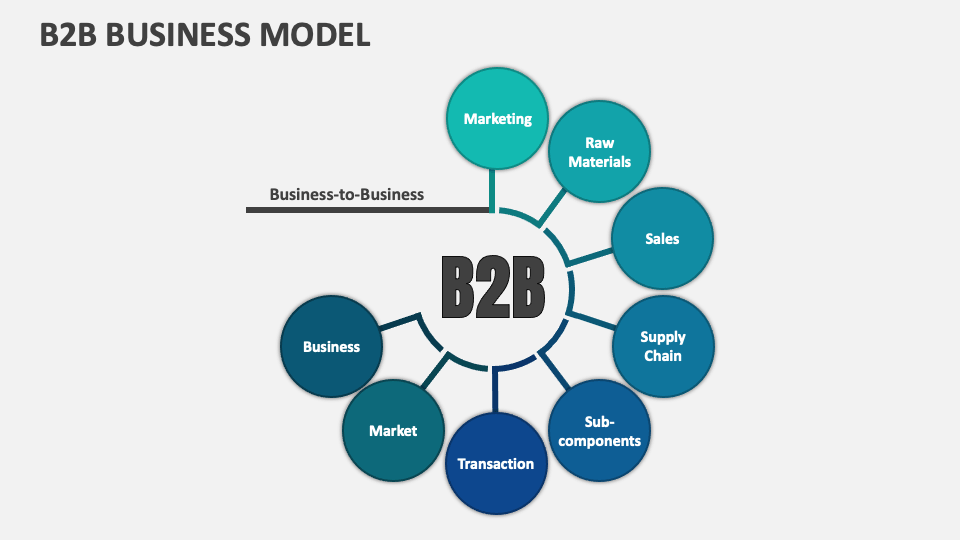In the fast-paced world of business, understanding effective strategies can make or break a company’s growth. One crucial approach that has gained significant traction is B2B marketing. B2B marketing, or business-to-business marketing, refers to the process where one business markets its products or services to another business, rather than directly to consumers. To fully grasp the power of this strategy, let’s explore a detailed b2b marketing example that illustrates how businesses can successfully connect with their target audience, build relationships, and drive sales.

Consider a company that produces advanced software solutions designed to improve supply chain management for large manufacturing firms. Their target market is other businesses in the manufacturing sector, making this a perfect case of B2B marketing. This company’s marketing team carefully crafts campaigns and content aimed specifically at the needs and pain points of manufacturing firms. The essence of B2B marketing in this example lies in tailoring the message to address industry-specific challenges, such as inventory tracking, logistics optimization, and cost reduction.
One core element of this B2B marketing example is content marketing. The software company develops whitepapers, case studies, and webinars that demonstrate how their product can solve complex supply chain problems. By offering valuable, educational content, they position themselves as thought leaders in the field. This is a classic B2B marketing approach—focusing on building trust and credibility over time rather than pushing for quick sales. Prospective clients engage with this content to understand how the solution can benefit their operations, moving them closer to making a purchase decision.
Another significant component of this B2B marketing example involves leveraging digital channels such as LinkedIn and industry-specific forums. These platforms allow the software company to directly engage with decision-makers, such as supply chain managers and procurement officers. Through targeted advertisements and personalized outreach, they maximize their visibility within the right circles. This targeted communication is a hallmark of effective B2B marketing, as it ensures that marketing efforts reach individuals who have the authority and interest to invest in the product.
The sales cycle in B2B marketing tends to be longer and more complex compared to consumer marketing. In our example, the software company understands this and incorporates lead nurturing strategies into their marketing efforts. They employ email campaigns to provide timely updates, share testimonials, and offer demos tailored to each prospect’s unique needs. This steady stream of communication keeps the brand top of mind and helps move potential buyers through various stages of the sales funnel.
A vital aspect of this B2B marketing example is the collaboration between marketing and sales teams. Marketing generates qualified leads by attracting prospects through their educational content and digital outreach. The sales team then follows up with personalized consultations to address specific client concerns and provide detailed demonstrations. This seamless handoff between marketing and sales ensures a cohesive customer experience, which is essential for closing deals in the B2B world.
Furthermore, analytics and data-driven decision-making play a critical role in refining the B2B marketing strategy in this example. The company continuously monitors key performance indicators such as website traffic, content engagement, lead conversion rates, and campaign ROI. By analyzing this data, they can identify which marketing tactics are most effective and allocate resources accordingly. This commitment to optimization exemplifies how successful B2B marketing is both an art and a science.
In addition to digital efforts, this B2B marketing example highlights the importance of attending industry trade shows and conferences. These events provide opportunities for face-to-face networking and hands-on demonstrations, which can be pivotal in building trust and securing contracts. The software company uses these events to showcase their product’s capabilities, engage with potential clients, and gather feedback to improve future marketing initiatives. Trade shows remain a powerful channel in B2B marketing for fostering relationships in a competitive landscape.
To further strengthen their B2B marketing strategy, the company also invests in customer success stories and referrals. Satisfied clients share their positive experiences through video testimonials and detailed case studies, which are then used in marketing campaigns to influence new prospects. This peer validation is highly persuasive in B2B marketing because purchasing decisions often involve multiple stakeholders who rely on trusted recommendations before committing to a solution.
Overall, this B2B marketing example demonstrates that success depends on a clear understanding of the target market, a commitment to providing value through education and relationship-building, and the use of multiple channels to engage prospects effectively. From content marketing and digital outreach to trade shows and customer advocacy, each element works together to create a comprehensive strategy that drives business growth.
In conclusion, B2B marketing is a sophisticated discipline that requires patience, insight, and a strategic approach. The software company’s example shows how a well-executed B2B marketing plan can transform complex products into compelling solutions for other businesses. By focusing on delivering value, nurturing leads, and building trust, companies can create lasting partnerships that fuel success in competitive industries. This example highlights the power of B2B marketing to connect businesses and foster growth through thoughtful, targeted engagement.
